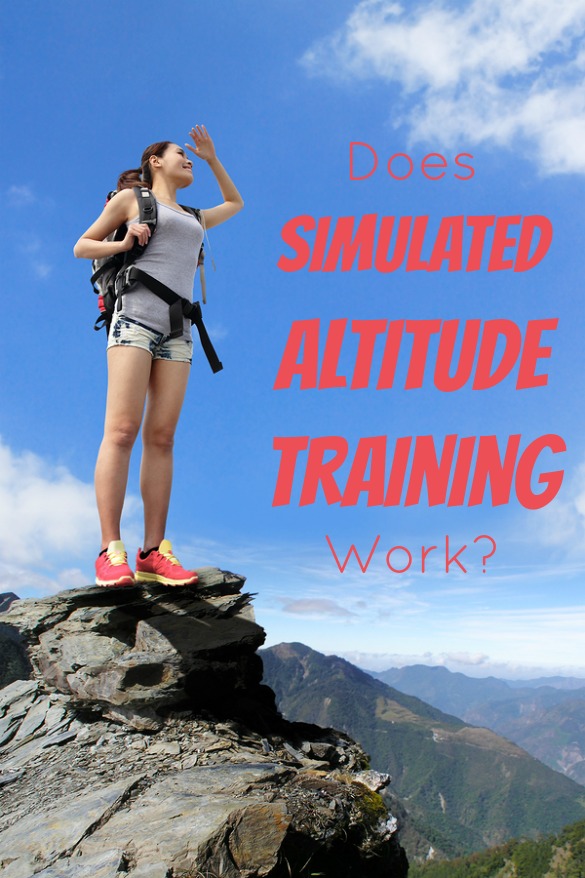Up High, Down Low: Does Simulated Altitude Training Work?
 There’s a reason why Boulder, Flagstaff, and Mammoth Lakes are considered training meccas for endurance sports: the air up there is much sweeter!
There’s a reason why Boulder, Flagstaff, and Mammoth Lakes are considered training meccas for endurance sports: the air up there is much sweeter!
Many changes can come from living and training at altitude. With time spent at high elevations, the body will produce more red blood cells to try to compensate for the reduced partial pressure of oxygen in the atmosphere. Red blood cells contain hemoglobin, which transports oxygen; thus, an individual training at altitude should have an improved oxygen carrying capacity.
But what if you live at sea level? A fitness company has set out to provide an (ahem) elevated experience for those who can’t take to the mountains. Air Fit, a 1,000-foot exercise room, utilizes an extra-large compressor, multiple air filters, and a huge holding tank to simulate altitude from 5,200 feet (think Denver) to 22,000 feet (or three-quarters of the way up Mount Everest). Group fitness classes offered in Air Fit include yoga, strength training, indoor cycling, and rowing.
According to Christina Dort, director of marketing for Leisure Sports, Inc, Air Fit was initially developed to meet the needs of hikers and climbers in the Northwest. The first altitude training studio was opened in Oregon to much acclaim.
“From that studio, we discovered that athletes and fitness enthusiasts of all levels were interested in the benefits of altitude training,” says Dort. Soon, a second location — this time, at The Quad in Pleasanton, Cali. — was designed as a dedicated training room for athletes of all kinds.
The new location, measuring 1,000 square feet, is currently the largest altitude training location in North America. Though the facility is mostly used for group workout classes, Dorn says diverse fitness interests have come in search of altitude gains: “There seems to be a good mix of cyclists, runners and recreational athletes. We have some members that are serious climbers and are training in the room to summit peaks; we also have ultra marathoners who are training for 100 mile races and competitive kick-boxers. Many of the participants are just fitness enthusiasts that are enjoying something new that adds a challenge to their workout routine.”
Does It Work?
Dr. Dale Wagner, an expert on high altitude physiology at Utah State University, says the jury is still out.
“Normobaric hypoxia, or artificially reducing the concentration of oxygen by scrubbing out O2 from the atmosphere, effectively reduces the partial pressure of oxygen getting to the lungs. So technically, it should be just as effective as actually being in a high altitude environment. However, most people do not live and/or train with a hypoxic setting for a sufficient amount of time to reap the same benefits of living in a high-altitude environment.”
In other words, a 50-minute fitness class in simulated altitude probably isn’t going to cut it. If you want to reap the benefits of fake mountain air, you’ll likely need to spend 16 to 20 hours in the environment each day.
What’s more, cranking up the altitude to 22,000 feet is a bit of overkill. According to Wagner, the sweet spot for altitude training is between 8,000 and 9,000 feet. Too much higher than that, and exercise capacity is hindered too much, putting an athlete at risk for fatigue and injury.
Still, it may have some benefit for certain athletes, especially those training at length for a race, hike or mountain climb. “Altitude training is really only beneficial for aerobic activities, like running, cycling and cross-country skiing,” says Wagner. “It would have no performance benefit for sprint or power activities.”
Would you train in simulated altitude? Why or why not? —Susan

Comments
Simulated altitude training does work! It certainly has performance benefits for sprint or power activities. Take a look at the ground breaking study from the University of Lausanne regarding this.
http://www.plosone.org/article/info%3Adoi%2F10.1371%2Fjournal.pone.0056522
Comments are closed.